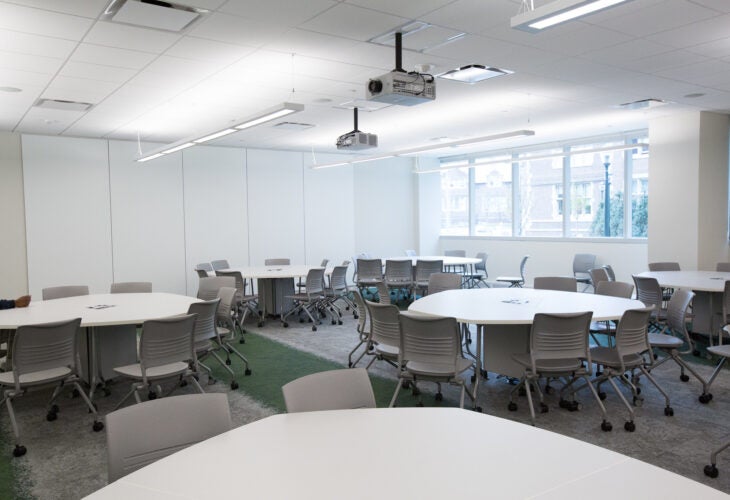In fall 2023, when Jennifer Gil was offered the TA position in Karen Lasater’s Statistics for Research and Measurement (NURS 2300) class, she knew three things: the course was what Penn calls a Structured Active In-class Learning (SAIL) course, she wanted to expand her statistics knowledge, and while public speaking wasn’t her strength, she knew it was an area she needed to work on. As a SAIL TA, she would be required to both test her statistics knowledge and regularly speak to the students in class. She was excited for the challenge: "Not only are you engaging with the material on a deeper level, but you're also actively guiding students through it in real-time. It’s like a teach-back method where you’re constantly interacting with the students, navigating their questions, and helping them connect the dots. It’s really exciting to be in that dynamic environment, where those lightbulb moments happen, and you're part of the process."
That same semester, Chris Benitez became Joseph Kable’s TA for his 200-level Neuroeconomics course. Benitez had taken several active learning classes as an undergraduate at Duke, where he was also an education minor, and they were some of his most memorable classes, so he was eager to participate in them now as TA.
Karen Lasater understands that the experience of being a TA in her SAIL course is different than a standard lecture course. “I think it can be uncomfortable for TAs who probably don't yet feel like experts in the content to be put on the spot answering student questions. But that experience is what I think makes it fun.” Like Lasater, Joseph Kable also recognizes the shift in responsibilities for the TAs in his course. “I could not do this class without asking way more of the TA than I did in my lecture classes.”
While Lasater and Kable may be teaching entirely different subjects, both agree that a strong teaching team makes the SAIL model effective.


